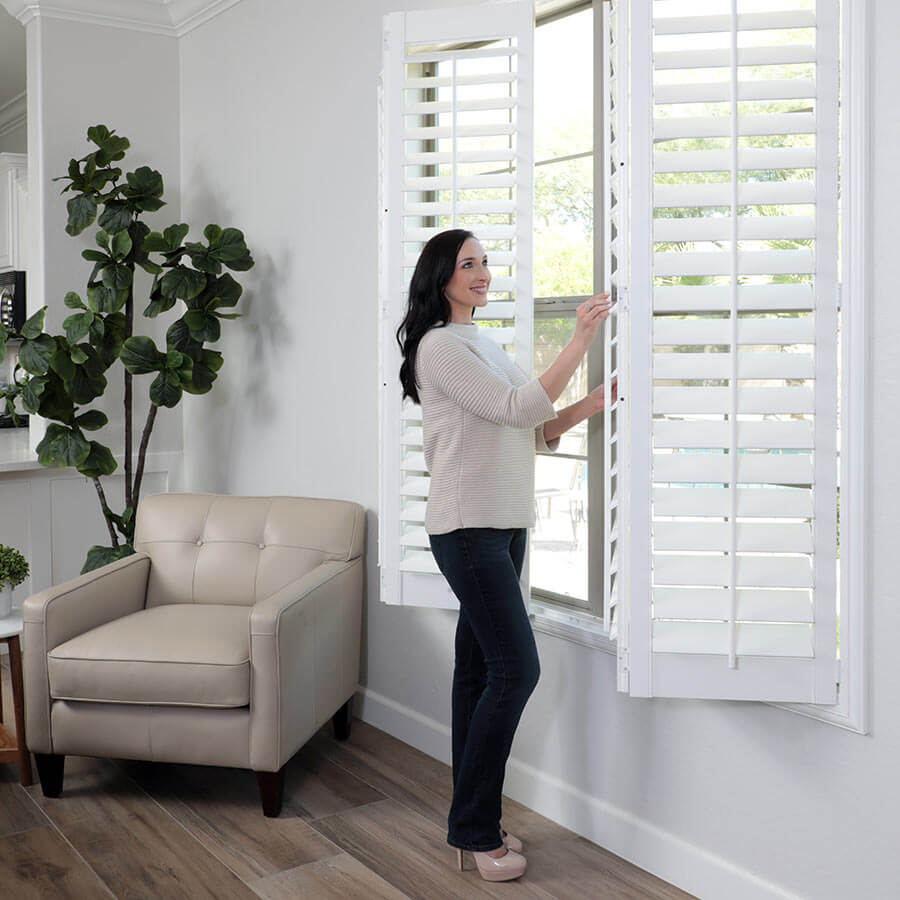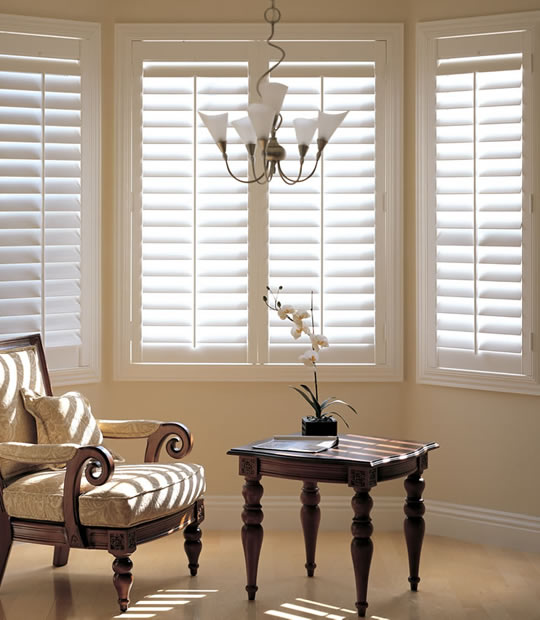Window Treatments Phoenix: Tailored Blinds, Shades, and Shutters
Window Treatments Phoenix: Tailored Blinds, Shades, and Shutters
Blog Article
What to Consider When Choosing Between Blinds and Shutters for Your Windows: An In-depth Analysis of Each Alternative's Benefits
Choosing the right home window treatment is a choice that goes beyond plain visual appeals; it includes performance, maintenance, and long-lasting financial investment. Blinds present a adaptable and cost-effective solution, while shutters supply unrivaled sturdiness and style. Each option flaunts unique benefits that warrant mindful factor to consider, especially regarding how they straighten with your home's layout and your personal preferences for personal privacy and light control. As we discover the crucial differences and advantages of both selections, recognizing these components will be important in directing you toward a choice that satisfies your requirements and enhances your space.
Secret Differences Between Blinds and Shutters
Often, house owners locate themselves pondering between blinds and shutters when selecting home window therapies. Comprehending the essential differences between these 2 alternatives can substantially affect their decision-making process.
Blinds are normally made from materials such as wood, fake timber, light weight aluminum, or plastic. Blinds are frequently more cost-efficient, appealing to budget-conscious home owners.
In comparison, shutters are solid home window coverings that can be custom-fitted to the home window frame. Shutters provide much better insulation and can enhance the general power effectiveness of a home.

Advantages of Blinds
Blinds offer a flexible and functional remedy for property owners seeking efficient home window therapies. Among the key advantages of blinds is their adaptability to different styles and preferences. Offered in countless products such as wood, artificial timber, aluminum, and fabric, they can match any kind of indoor design plan. In addition, their wide variety of structures and shades permits modification to match existing design.
An additional substantial advantage of blinds is their ease of operation. Numerous contemporary blinds included easy to use systems, consisting of motorized systems and cordless alternatives, making them obtainable for all ages. This convenience is improved by their capability to supply specific light control, permitting property owners to conveniently readjust the level of sunlight entering a room.
Blinds also provide exceptional privacy choices, as they can be fully opened, partially tilted, or entirely shut, depending on the desired degree of seclusion. They are usually much more affordable than shutters, offering an economical option without compromising style or performance. Lastly, upkeep is simple, as the majority of blinds can be cleansed with an easy wipe-down, guaranteeing that they remain an eye-catching function in any type of home for several years ahead.
Advantages of Shutters
Shutters provide a distinctive collection of benefits that make them an appealing choice for house owners looking for sturdy and stylish home window therapies. Among the primary benefits of shutters is their remarkable toughness - window treatments phoenix. Created from durable products such as timber, plastic, or composite, they are made to withstand the test of time and stand up to damage from UV rays, wetness, and temperature level fluctuations

Shutters additionally provide enhanced personal privacy and light control. House owners can easily readjust the slats to accomplish the desired degree of brightness while maintaining personal privacy from the outside. Unlike blinds, which may flex or sag over time, shutters preserve their shape and functionality.
Moreover, shutters can raise the value of a residential or commercial property (window treatments phoenix). Their classic visual and toughness interest potential customers, making them a rewarding investment. In summary, the longevity, energy effectiveness, personal privacy control, and capacity for enhanced residential property value make shutters a compelling alternative for window treatments
Visual Considerations
When picking window therapies, aesthetic considerations play a crucial function in enhancing the general layout and atmosphere Web Site of a room. Both shutters and blinds offer distinctive visual qualities that can complement different indoor styles, from modern-day to standard.
Blinds typically supply a streamlined, minimalist appearance, quickly available in a series of products and colors. This convenience allows house owners to coordinate blinds with existing style, creating a unified look. Their straight or vertical slats can add a modern side, making them appropriate for city setups.
On the other hand, shutters exhibit a traditional style that boosts rustic and traditional insides. Their strong structure and adjustable coatings, such as timber spots or repainted alternatives, stimulate a feeling of eternity. Shutters can work as a statement piece, attracting interest to the home window while offering an upscale aesthetic.
Eventually, the choice between shutters and blinds need to reflect not go right here only personal design but also the desired ambience of the room. By very carefully considering just how each choice straightens with the overall style vision, home owners can successfully improve their space's aesthetic charm, making certain a harmonious and welcoming environment.
Cost and Maintenance Elements
Cost and upkeep are crucial aspects to take into consideration when picking in between blinds and shutters for home window therapies. Blinds are typically extra budget-friendly, with a large array of options offered at numerous rate points.
In contrast, shutters often tend to lug a higher preliminary expense as a result of their custom manufacturing and robust building and construction. This investment may produce long-lasting financial savings, as shutters are usually more resilient and need less regular substitute. They additionally supply premium insulation, possibly lowering power bills over time.
Maintenance plays a substantial duty in the total price of window treatments. Blinds usually require routine dusting and occasional washing, while shutters can be wiped down with a damp cloth for cleansing, making them simpler to maintain. In addition, shutters are much less at risk to harm from UV rays and dampness, adding to their long life. Inevitably, the choice in between shutters and blinds should balance both preliminary financial investment and continuous maintenance needs to make sure a satisfactory return on investment.
Final Thought

Blinds provide a adaptable and economical option, while shutters supply exceptional durability and style.Expense and upkeep are crucial elements to take into consideration when picking between blinds and shutters for window treatments. Blinds normally need normal cleaning and periodic washing, while shutters can be cleaned down with a damp fabric for cleaning, making them less complicated to keep. Ultimately, the choice in between blinds and shutters need to stabilize both first investment and ongoing upkeep requires to make sure a sufficient return on financial investment.
In recap, the decision you could try these out between shutters and blinds pivots on different elements, including product structure, design flexibility, and price.
Report this page